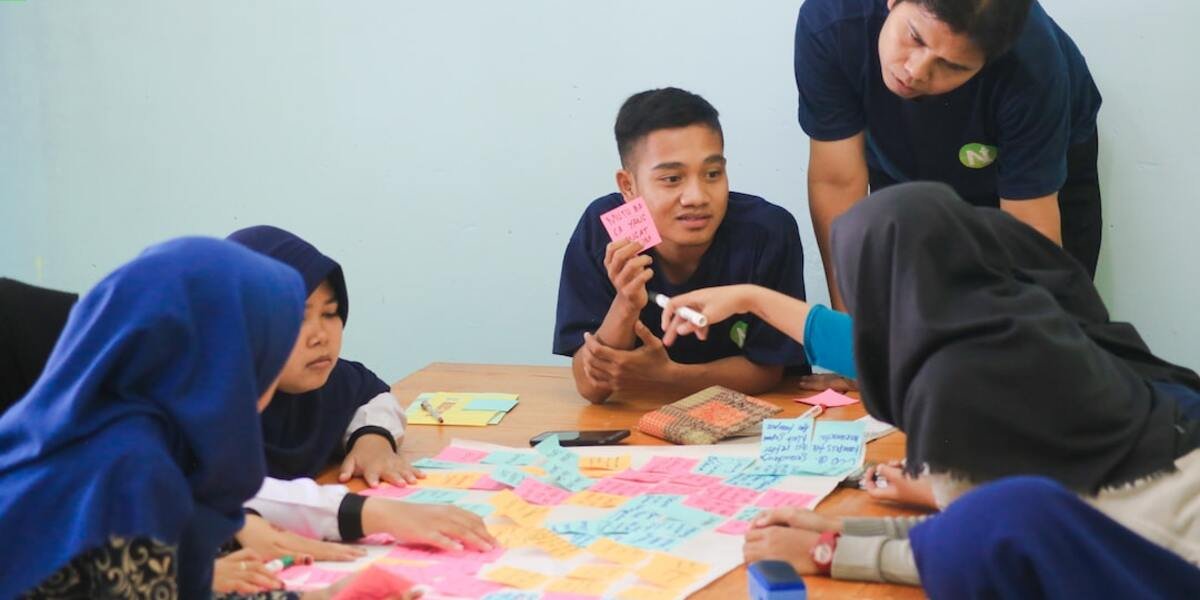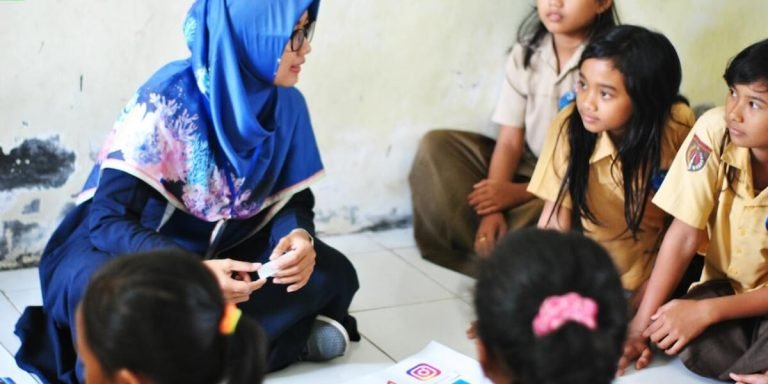Helping Families in Need: Empowering Through Education
In a world that often seems rife with disparities, education stands as an equalizer. ‘Helping families in need’ has always been important but empowering them through education holds even greater significance. This is because knowledge not only enlightens minds but also opens up avenues for increased opportunities, life skills and personal growth.
Parent and educator support plays a paramount role in this empowerment process. They act like the bridge between vulnerable children and accessible learning resources, ensuring each child can maximize their potential irrespective of socioeconomic status or background challenges. By understanding how to motivate learning in challenging environments and providing necessary tools for success, parents and educators perform an indispensable duty towards societal upliftment through education.
Did you know?
According to UNESCO, every additional year of schooling a mother receives reduces the mortality rate of her children under five by 8%. Thus, education plays a crucial role in not just empowerment but also in increasing survival rates among children.
Understanding the Impact of Parent-Educator Partnerships on Family Support
In the ever-evolving digital age, technology integration has become an indispensable part of education. This move holds significant potential for helping families in need and bridging gaps that may exist due to socio-economic disparities.
The cultivation of parent-educator partnerships underscores this revolution in learning. It creates a robust support system that reinforces the child’s educational journey while alleviating challenges faced by underprivileged families. When parents team up with educators equipped with advanced tools and methodologies, they can effectively harness resources offered by tech-integrated curriculum to bolster their child’s growth trajectory.
Such collaborations enable families to better understand how technology is transforming traditional approaches towards teaching. They naturally foster open communication lines between schools and homes, enhancing parental engagement levels necessary for improved academic outcomes.
The Role of Communication in Strengthening Collaboration
In today’s digitally charged world, effective communication has become a critical tool for educators. The improved interaction between parents and teachers can contribute substantially to enhancing family support mechanisms, thereby significantly helping families in need.
One cannot overstate the importance of building strong parent-educator partnerships. It is an essential part integrating technology into education effectively. This bond creates an environment where children see the mutual respect and shared objectives amongst their primary caretakers at home and school, providing them with a sense of security.
Furthermore, these alliances facilitate quicker problem-solving strategies when it comes to learning difficulties or behavioral issues. More importantly, they can bridge any tech-knowledge gap that may exist among some parents who perhaps might not be as technologically savvy yet are keen on tracking their child’s progress through AI-based applications used by schools nowadays.
Likewise for educators – having regular conversations with parents does wonders for perspective-taking too; understanding each student from viewpoints other than those available within classroom settings often introduces insights which otherwise remain overlooked due to lack thereof daily connections with students’ lives outside educational environments.
Emails have taken over traditional notes back-and-forth between school-home so let’s use this advantage! Rather than waiting till parent-teachers meetings or report cards day – giving live feedback about achievements or areas needing improvements could make all difference towards better development trajectories every academic year!
Identifying Signs a Family May Require Assistance
As we continue to navigate the ever-evolving terrain of technology integration in education, one factor remains constant – the critical role of parent-educator partnerships. When these alliances are strong and supportive, they can be life-changing for families confronting challenges — particularly those that may require additional aid.
Firstly, let’s examine some signs which indicate a family might need assistance:
1. Declining Academic Performance: If there’s an unusual decline in a child’s academic performance or engagement with schoolwork this could hint towards certain struggles at home.
2. Emotional Issues: Children dealing with emotional distress often display increased agitation or withdrawal from activities they once enjoyed.
3. Frequent Absence from School: Regular absence from school without justifiable reasons is another sign a family may be going through difficult times.
4. Changes in Behavior or Attitude: Abrupt changes such as sudden aggression or lackadaisical attitude also suggest potential issues.
Once these signs have been identified by either parents or educators, it becomes important to approach helping families in need delicately and effectively.
Establishing reliable communication channels between parents and educators enables quick intervention when necessary and ensures persistent availability of support.
Apps like Remind enable teachers to send updates about students’ progress directly to their phones making it easier than ever before for busy working parents stay informed about children’s schooling experiences even if their work schedules don’t provide them time during normal office hours..
Strategies for Effective Resource Sharing Among Parents and Educators
The evolving landscape of childhood education in 2023 heralds the increasing importance of technology integration. It has become crucial for parents and educators to share resources effectively, fostering an environment that facilitates learning while also helping families in need. This means more than merely pooling together physical materials—it involves sharing digital tools, apps, online content, and educational strategies rooted in advanced technologies.
Establish a clear communication system between parents and educators using platforms like email groups or dedicated portals on school websites to share valuable information.
Incorporate modern technology utilities such as interactive whiteboards or remote-learning software to foster an inclusive space that promotes dynamic interaction and enables personalized guidance for individual student needs.
Strong parental involvement significantly influences the successful integration of technology into daily teaching. Parents and teachers share this responsibility equally. Educators should learn about the latest gadgets kids use at home to develop relevant curriculums. Similarly, parents must get to know the technology used in classrooms to support learning at home effectively, aligning with teacher-led digital instruction at school. These joint efforts aim to provide seamless access to quality education for all students, regardless of their situation.
Coordinating Community Assistance Programs
Coordinating community assistance programs can be a significant step towards aiding families in need, while simultaneously strengthening parent and educator support. In the wake of technology integration in education, it’s crucial to leverage digital tools for effective coordination.
Such initiatives should start with identifying relevant community resources that aim at helping families in need. Some examples include public libraries offering free access to educational materials or local businesses providing afterschool tutoring programs sponsored by corporate social responsibility funds.
Incorporating modern technological methods could play an essential role here. Establishing online portals where parents and educators can share information about these resources would greatly improve accessibility. This way, they won’t just share physical items like books or toys but also valuable insights on how best to use them for childhood education purposes.
Communication apps such as WhatsApp groups too all very useful additions enabling real-time discussions amongst users regarding available opportunities easing transition back into normal schooling regime post-pandemic – proving especially beneficial underprivileged households struggling make ends meet during these tumultuous times..
Yet another promising prospect lies Skype workshops seminars conducted successful professionals their respective fields who wish contribute society impart knowledge experience younger generations might otherwise gotten traditional classroom setting..
Utilizing Technology to Enhance Access to Support Services
Today’s technological advancements allow us to extend resource sharing beyond physical items to include supportive services. Technology integration in education opens up new paths for helping families in need, providing them better access to support resources. Educators and parents can leverage the following strategies:
1. **Collaborative Platforms:** Online platforms like Google Classroom or Blackboard allow teachers to share educational materials with both students and their parents seamlessly.
2. **Mobile Applications:** Numerous apps have been developed specifically for parent-teacher communication – ClassDojo, Bloomz, Edmodo all offer a safe space where information about academic progress and performance can be shared freely.
3. **Video Conferencing Tools:** Through tools like Zoom or Microsoft Teams, face-to-face meetings are possible without leaving home making it easier for working families who struggle with time constraints.
4. **Online Support Groups**: This digital age allows people from around the globe to connect about shared experiences; joining an online support group created especially for parents might prove immensely beneficial as they navigate some tough decisions during their child’s early school years.
5. **Educational Websites** – Parents could use websites such as Khan Academy which provides free learning resources that may help children excel academically while also giving insights into potential areas needing improvement.
Building Resilient Networks for Helping Families in Need
In today’s increasingly digital world, technology integration plays a pivotal role in fostering resilient networks and providing assistance to families in need. Leveraging these advanced tools encourages more parents and educators to actively involve themselves in children’s educational journeys. Be it through innovative apps, online platforms or smart interfaces – technology has considerably enhanced the dynamics of learning and teaching alike.
Indeed, schools are no longer confined within four walls; with internet accessibility being a paramount component that facilitates distance-learning models. This revolutionary approach equips parents and educators with the requisite flexibility while also ensuring uninterrupted education for children dealing with socioeconomic challenges.
Furthermore, robust technological systems can provide significant support by tracking students’ progress meticulously over time which brings transparency into their academic journey for both teachers and caregivers. The data collected from such integrated software not only helps identify potential areas of improvement but also enables effective communication between different stakeholders involved – thus creating an inclusive environment critical for holistic childhood development.
This fusion of education with cutting-edge technologies is indispensable when it comes to helping underprivileged families tide over adversities they may confront during uncertain times like now (2023). As we move forward towards building stronger communities backed by accessible educational resources via tech-integration, every child stands an equitable chance at gaining knowledge irrespective of their family’s financial status.
Fostering Empathy Through School-Family Engagement Projects
Engaging parents and educators in school activities is not just a way of creating robust support systems for children but also an effective method of fostering empathy within our communities, particularly when it revolves around helping families in need. With the integration of technology into education setting new benchmarks each day, we are witnessing innovative ways to develop empathetic environments that connect schools and homes more efficiently than ever before.
One essential project currently being adopted by many institutions involves using digital platforms to encourage parent-educator interaction. As opposed to traditional communication methods like newsletters or face-to-face meetings which often fail due to time constraints or unavailability, these platforms provide easier access points for everyone involved. Parents can stay updated about their child’s progress while educating themselves on the best practices tailored specifically towards their child’s needs.
Furthermore, through such collaboration over online networks, both parties gain valuable insights into familial circumstances where interventions might be necessary. By noticing signs of distress early on – whether academic underachievement linked with home issues or indications during private chats – teachers can act swiftly offering timely assistance hence preventing spiraling situations from getting worse.
Another promising enterprise includes harnessing virtual reality (VR) tools wherein students take part in simulations exposing them firsthand the daily struggles faced by disadvantaged families thereby cultivating empathy among younger generations effectively.
Creating Sustained Mentorship Opportunities for At-Risk Youth
In 2023, the integration of technology in education is key to shaping future generations. This remains particularly true when it comes to helping families in need; especially those with at-risk youth who are often vulnerable and marginalized.
Creating sustained mentorship opportunities plays a crucial role here. Not only does it provide these youngsters with much-needed guidance, but also helps them utilize their potential and talents optimally.
To begin with, we see an innovative approach towards mentorship involving smart technologies that connect mentors and mentees digitally – a vital step facilitated by resilient networks developed for supporting this cause. These technological platforms can offer improved communication methods such as video calls or chatbots which create more engaging experiences for both parties involved.
In addition, digital tools like interactive tutorials make learning easier than ever before while incorporating fun elements keeping youths engaged throughout their educational journey. With virtual reality (VR) emerging as a game-changer in the field of mentoring as well, skill development isn’t just about textbooks anymore!
Conclusion
In all, navigating the ebbs and flows of life can be daunting for any household. Yet when we take on this journey armed with knowledge, it becomes less burdensome – especially when it comes to aiding those helping families in need. Education proves itself time and again as a mighty tool that not only empowers but also props open countless doors of opportunities for children.
So why stop here? We invite you to delve deeper into our website where a treasure trove of informative content awaits your perusal. Be it guides on effective reading techniques or support systems essential for educators; there’s plenty more insight and guidance available at just a click away!
Keep exploring because each child deserves an education steeped in love, curiosity, empowerment – every day is indeed another page ripe with possibilities!







